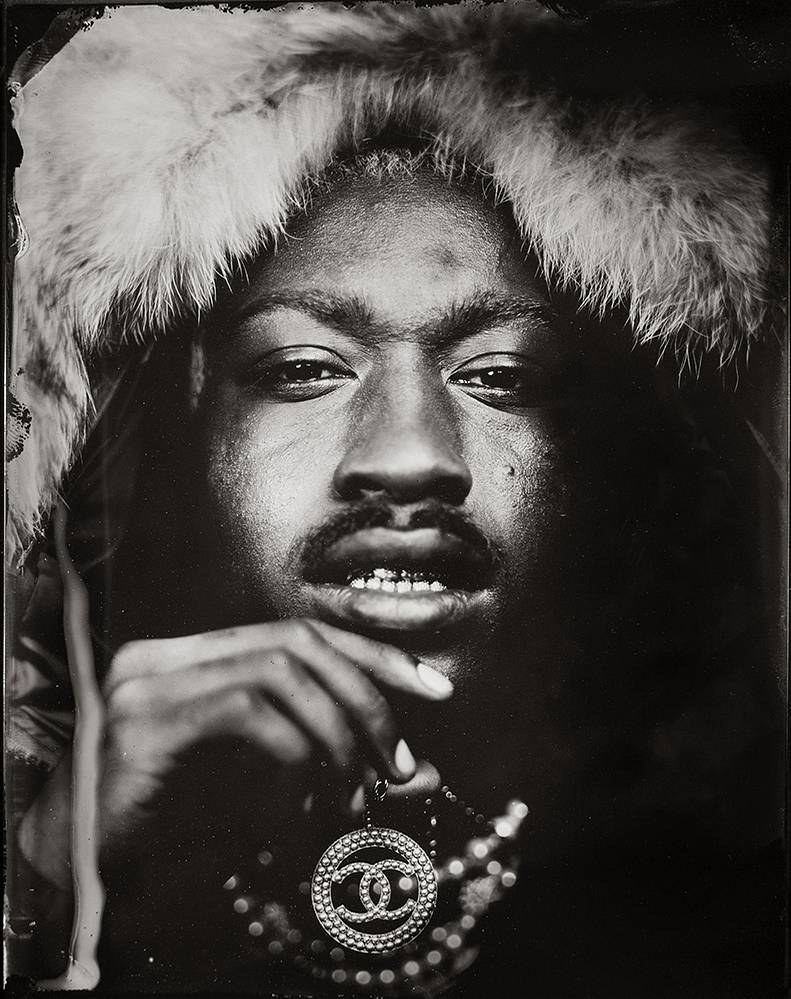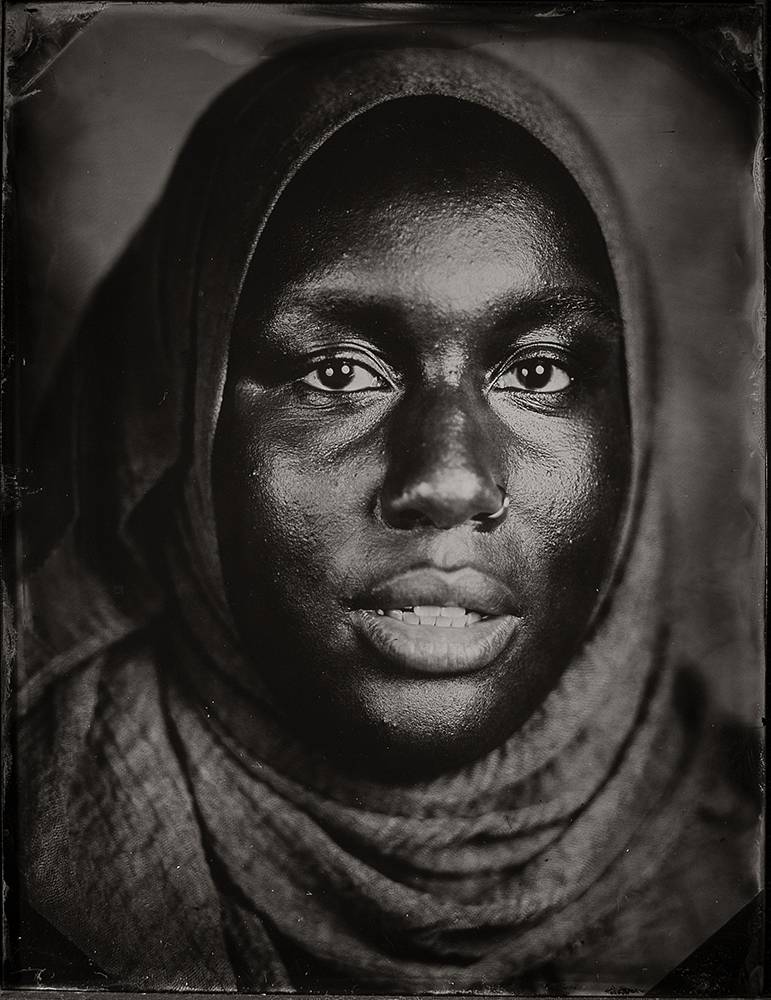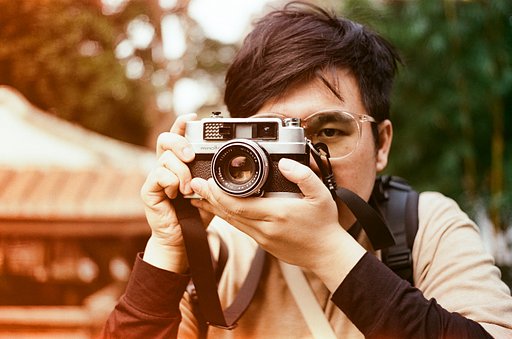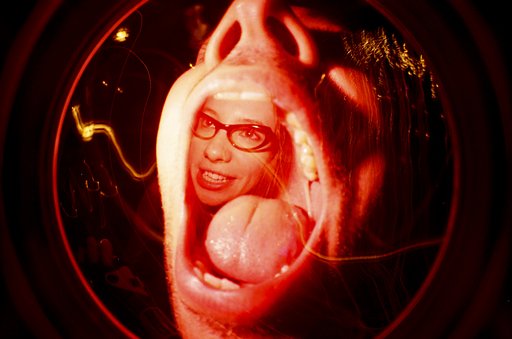Street Portraits With Justin Borucki's Unusual Street Camera
7 20 Share TweetWith a portable studio wandering in the streets of New York City, you can't miss Justin Borucki and his tintype rig and large format camera. But don't be intimidated by his setup, Justin has been shooting tintype portraits all over the city and developing them on the spot in his improvised darkroom. Although he is primarily is primary an editorial and music portrait photographer, that hasn't kept him from shooting out on the streets, even with a camera as heavy as his. But apart from being a photographer, Justin also gives workshops and group sessions to learn all about the art of tintype (even on Zoom!). We talked to him about how he got started with large format photography, and the challenges he faces while on the streets of the Big Apple, shooting portraits of strangers!

Hello Justin! Can you tell us a bit about yourself, and how you got into photography, especially analog photography?
I have been taking pictures for most of my life. I discovered photography accidentally in high school, filling holes in my schedule. I quickly fell in love and changed my college major to photography from art. I am primarily an entertainment portrait photographer, specializing in musicians. I was shooting film for about a dozen years or so before digital became affordable. In 2005 I switch to digital 100%. And I never really looked back on film. What I do love about analog is the cameras. I have a lot of emotional connections with my old film cameras. I’ll shoot them occasionally. I’ve never developed an emotional bond with a digital camera.
And then there’s the Wet Plate Collodion process. What originally drew me to the Tintype process was the handmade nature of it all I love the idea that each one had to be made from scratch and each one was unique. I love the look of it, I love the aesthetic of it. What I didn’t know was how crazy the processes were, and how much work it takes to create a single image. I was inspired to learn the Tintype process to reconnect with my fine art roots of street photography. Robert Frank was a big inspiration for me. I didn’t go anywhere without my camera. Including local punk rock shows. Eventually, I started getting paid to shoot bands and it snowballed from there. Street photography fell by the wayside. I was inspired by the tintype process to challenge myself to take that process out onto the street and make street images: I had to build a portable darkroom and have all my equipment with me on the street so all the pictures that you see that were made were made right there with my darkroom rig with all the chemicals, water and gear needed. Naturally, since I’m a portrait photographer I started making tintype portraits. I have an awesome pop-up business. I make tintypes on the street of New York City, in pre-pandemic times as well as different events and locations, and even in my home studio in New Jersey.
How did you get started with large format photography?
I actually started with large format cameras in college. Over the years I’ve bought and sold three or four 4 x 5 cameras. And I kick myself in the butt years later when I decided to learn to make tintypes. I was so mad that I had so much gear and had to start over again.
What camera do you shoot with?
I shoot with a Kodak Eastman 8x10 2D. It's an 80-year-old beauty.

What do you usually like to shoot on large format?
Right now I strictly shoot tintypes with large format. However, a friend gave me some Ilford hp5 I’d like to shoot. In my experience shooting tintypes with a large-format camera is completely different than anything that I’ve ever done.
How is it different to shoot with large format vs medium format?
I’ve always hated shooting on a tripod. And you have to with this process. Granted there’s some 4 x 5 cameras with rangefinders that you can shoot handheld. But you can’t do that with tintypes, the exposures are way too long. So yes the approach is completely different, it is extremely slow. When you’re looking through the back of the camera everything is upside down and backward so it takes a little bit of time to get used to. And because the process requires a darkroom there’s a lot of setting up so typically before I set up a shot I damn well know that it’s gonna be a good shot before I go through all the trouble of emptying out my van full of equipment. So basically I figure the shot our before I build the camera. The darkroom is needed to process each plate, one at a time. The process is called wet-plate because the plate has to be developed before it begins to dry, otherwise, it will lose its sensitivity.
How did you get started with tintypes?
I got my start with tintypes when I picked up a book called chemical pictures by Quinn Jacobson. He’s an amazing artist and educator and extremely dedicated to the alternative processes. And his book alone got me started. When I started it took me several months until I got consistent results. You have to make all the mistakes to learn how to troubleshoot them. In hindsight I defiantly see how taking a workshop can help expedite the troubleshooting process. There's so much that can go wrong. Even after doing this for 7 years, I’m still fine-tuning my practice. And because this process is so labor-intensive I consider it a practice. There’s always something that needs to be done, whether it's preparing and mixing for your next shoot or performing maintenance on your silver bath.
Your portraits are both very beautiful but also very intimate, your subjects seem to be at ease with you. How do you make them feel comfortable?
Most of my tintype portraits are made with one shot with just a few minutes of camera time, so I connect quickly and make it count. I can’t tell you how I get my subjects at ease I guess I’ve been doing this so long, I project confidence and ease and I just treat people like people.

Your street photography tintypes are gorgeous. When did you start shooting them?
My tintype street photography started back in 2013. That’s the year I started making tintypes. At the time it was just a few short years since I got married and moved to New Jersey. I missed my native town. I was looking from a way to reconnect with NYC. So I thought it was a good idea to get back to street photography but with the tintype process. It was sort of a rebirth for me. The tintype process help me fall back in love with photography.
What are the challenges you face when shooting large format? And what are the advantages?
You’re dealing with bigger and heavier equipment, that requires more set up a time, and because of that you tend to plan ahead. Or at least spend time eyeballing the shot before you bust out the gear. So it helps to spend some extra time just working with the camera, so you get to know it inside and out, and you can move a lot faster with it. Get to know your lenses, know what they see so you know where to put the camera down to get done faster.
How do people on the streets react when they see you shooting tintypes?
People love seeing the tintype process. It is very magical to see: the fixing process can be done in the daylight, so folks can see the unexposed silver being dissolved. People are often amazed that I'm doing this out on the street.
How do you develop the pictures when you shoot street photography?
When I shoot the pop-ups on the street, I set it up out of my van. When I'm shooting the street images I have my equipment set up on a self contained rolling rig that I built. The rig has 3 cabinets: one is the darkroom, the others hold the camera, water tank, chemicals, trays all the odds and ends, and the tripod straps on top.

Can you tell us more about the workshops and pop up you do?
During COVID times I am available for individual or zoom workshops. Group workshops will start up in healthier times. Workshops are customized to the students needs, for all levels of experience. I have had wetplate students with zero experience, with any sort of chemical process.
What advise would you give to someone trying out large format for the first time?
As I said before, get to know the camera and lens well, get used to composing it by pointing it at everything around you. Getting the "feel" of your camera and lens will allow you to make quick decisions on composing your camera when it counts.
To follow more of Justin's work, or book a session with him, head over to his Instagram or website , and follow updates about his Tintype Pop Ups here !
written by tamarasaade on 2020-09-23 in #culture #news #people #portraiture #large-format-photography #portrait-photography #justin-borucki



























7 個留言